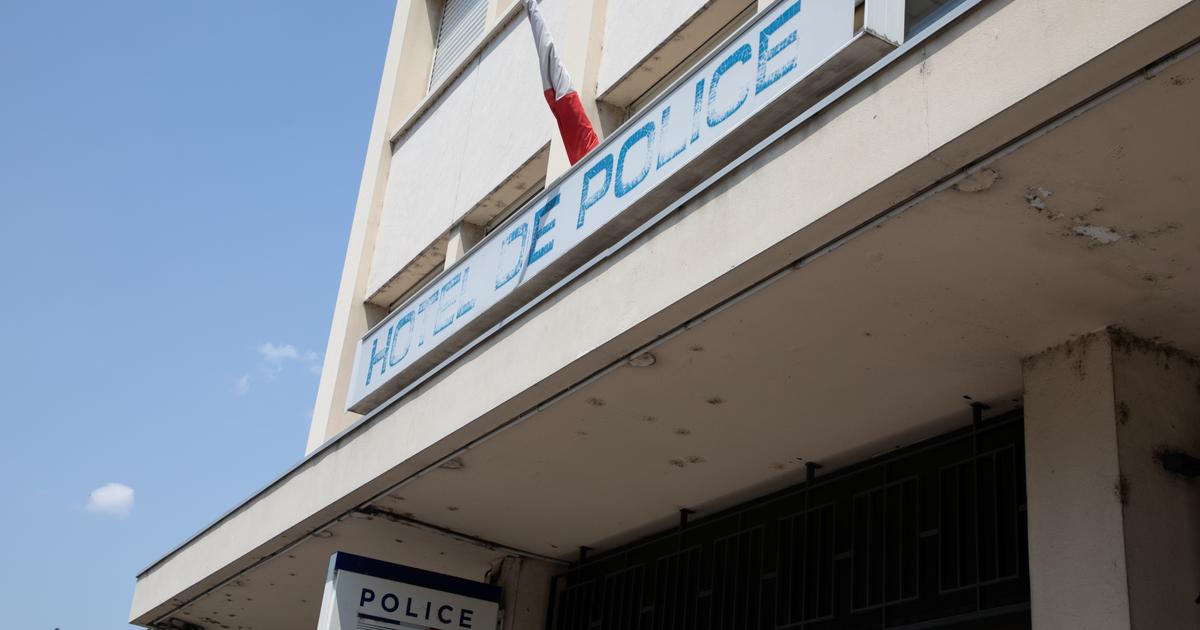Official figures on police violence are only a small part of the reality. This is the result of a study by the team around Bochum criminologist Tobias Singelnstein. Thus, there are at least five times more suspected cases of police violence than listed in the statistics. In 2018, the prosecutors closed a good 2000 procedures.
Singelnstein has questioned more than 3,300 people who claim to have experienced such attacks. His study examines the topic in Germany for the first time in detail from the point of view of those affected. Although the study is unrepresentative and has other limitations, it provides a deeper insight into a controversial topic. The most important results.
Above all, football fans and left-wing activists are affected
A traffic control, a dispute between neighbors, to which the police are called, an arrest: The respondents stated that they had experienced unjustified police violence in very different situations. Nevertheless, two groups are particularly affected.
55 percent of respondents said that the incident had come from a demonstration or other political action such as blockades or occupations. Almost all of the participants of these events located politically left. Another 22 percent of the cases occurred before and after football matches. There are two possible reasons for this, according to Singelnstein:
- The scientists contacted different multipliers. It is conceivable that left-wing political activists and representatives of football fans were particularly successful in promoting the study - and therefore were able to get many like-minded people to participate.
- Nevertheless, says Singelnstein, many people outside of these groups have been reached through public relations. Another explanation is that football matches and political events are particularly burdened. Singelnstein speaks of "established conflict conditions". In other words, at such events, the expectations and behavior of police officers and participants could trigger conflicts rather than traffic control.
Most experience physical violence
71 percent said they experienced physical violence. Frequently bruises, bruises or abrasions. Almost one in five reports severe injuries such as broken bones or concussions.
From the first contact with the police to the use of force, it took at most two minutes in 54 percent of cases. One in five participants said that there had been no contact before, so the police had used force directly.
One in three respondents who experienced violence at demonstrations or football matches said there was no reason to argue with the police. Another third of respondents said he was accused of misconduct.
Several cases remain without legal consequences
The majority of respondents did not report. The most important reason: they were convinced that this had no consequences for the police. Especially demonstrators and football fans state that they could not identify the official.
In 439 cases, participants said criminal proceedings had been initiated. In these cases, there were testimonies (74 percent of cases), medical findings (63 percent) or video footage (48 percent).
Respondents who opted for an ad did so mainly to avoid such abuses in the future and because they wanted the suspect to be punished. In the last place of the reasons mentioned is the desire for compensation.
more on the subject
Of the 439 trials, 354 were closed: seven percent were indicted and over 93 percent were dropped. In most cases, the suspicion was not sufficient (66 percent), in about half of the cases, the officials could not be identified.
Singelnstein compares these figures with the law enforcement statistics from 2018 issued by the Federal Statistical Office. Accordingly, the number of charges in cases of alleged unlawful police violence last year was two percent (study seven percent), the recruitment ratio 98 percent (study 93 percent).
If one looks at all crimes, the charge rate is 24 percent - is so well ten times higher than in alleged unlawful police violence. In the case of intentional assault offenses, the rate is 21 percent.
Details about the study
How were the participants interviewed?
They completed an online questionnaire that was accessible from November 2018 to January 2019. Respondents provided information on general information such as their age and education. In addition, they were asked in detail about their experiences with police violence, described the situation, the injuries, their own behavior and that of the officials. 5677 people completed the questionnaire completely. Respondents were not included in 1999 because they did not report on police violence but reported on other experiences.
How is the sample composed?
Three quarters of respondents are male and 16 percent have a migrant background. The average age is 30 years. 71 percent have (Fach-) Abitur. 43 percent work, and 43 percent are students. 67 percent of the participants earn net less than 1500 euros a month.
Were there quality controls?
Since the questionnaire was accessible to everyone, abuse is conceivable. Cookies made it difficult to participate multiple times, and scientists checked whether the answers were plausible. Who was done too fast ("Durchklicker"), too often did not provide information or remarkably often with extreme values answered, was not considered. In this way, the scientists sorted out about 300 participants. Left over were 3375 people.
How was the study funded?
The costs were borne by the Deutsche Forschungsgemeinschaft. It is funded by the federal and state governments. If you want to be supported, you must submit an application. Two-thirds of projects in the area where Singelnstein's study was funded are rejected.
Which companies were involved?
The questionnaire was programmed by the scientists themselves and no third companies were involved in the survey. Only the platform for the online questionnaire was purchased.
Criminal proceedings occur only in a few cases
Nine percent of the respondents filed a complaint. In addition, there were third-party ads or investigations of ex officio. As a result, about 14 percent of the cases involved criminal proceedings - they form the bright field. The dark field is in the study with 86 percent about six times as large.
Can one generalize this number? Singelnstein says: Yes. Because the above-mentioned charge and recruitment rate of the study is similar to the official statistics - the bright field of the study can thus be compared with general bright field. Conversely, according to Singelnstein also applies to the dark field.
But since he does not want to exaggerate this, says Singelnstein, he made a conservative estimate. In his opinion, the dark field in police brutality in Germany is at least five times as large as the bright field.
The results can not be easily generalized
The results are not representative. That is, they can not be easily generalized - especially as the interviewees mainly referred to as political left or football fans.
For a representative study, it is necessary to interrogate people randomly, for example over the phone (read more about this topic here). Scientists estimate that only 0.47 percent of the population of Lower Saxony has experienced police violence. If one translates this finding all over Germany, Singelnstein would have had to question tens of thousands of people in order to achieve a sample size that is even approximately representative. An effort that was impossible for him and his team to realize.
In addition, it is questionable whether laymen recognize illegal police violence. After all, policemen are allowed to use force under certain conditions.
Singelnstein tried to counteract by pointing out the difference within the questionnaire, for example in short explanatory texts. In addition, 36 percent of respondents said they experienced police violence, which they classify as legally compliant. An indication that the participants do not consider every compulsory offense of the police illegal. Nevertheless, Singelnstein admits, it is likely that the study contains cases of police violence that are justified from a legal point of view.
The present study is an interim report. In the second part Singelnstein wants to interview experts from the police, judiciary and civil society.







